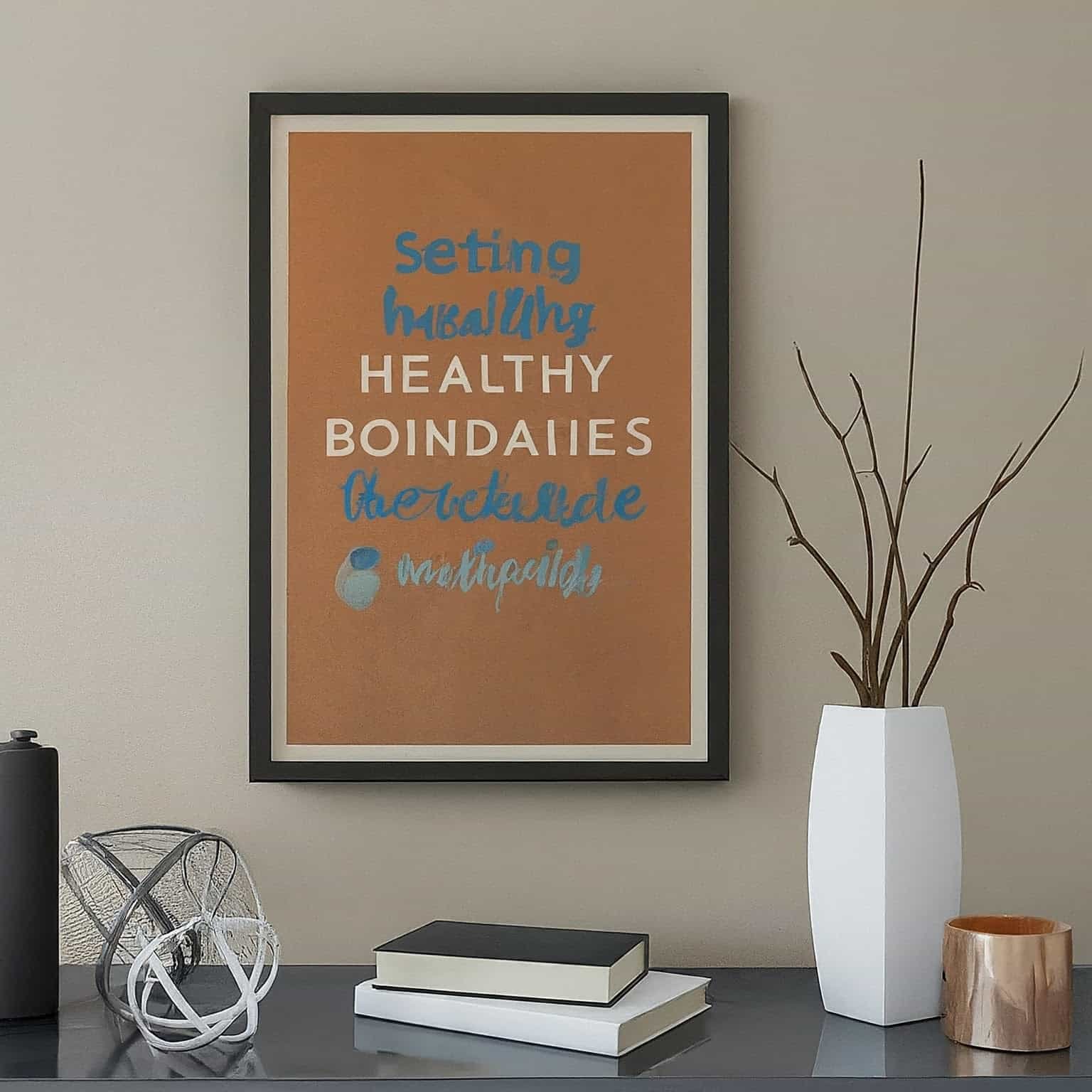In today’s fast-paced world, prioritizing mental health is crucial, and mental health apps have emerged as invaluable tools for emotional well-being. These apps offer diverse features and resources tailored to help users navigate stress, anxiety, depression, and more. From mood tracking to meditation exercises, they provide accessible support anytime, anywhere. This guide explores the significance of mental health apps, their purpose, and how they can benefit individuals seeking to enhance their well-being or support loved ones on their mental health journey.
Mental health apps play a crucial role in promoting emotional well-being and providing support to individuals facing mental health challenges. With the accessibility and convenience of smartphones, these apps offer a convenient way for users to access resources and tools to improve their mental health anytime, anywhere. Whether you’re struggling with stress, anxiety, depression, or simply seeking ways to enhance your overall well-being, mental health apps offer a variety of features, including guided meditation, mood tracking, breathing exercises, cognitive-behavioral therapy (CBT) techniques, and access to professional support.
Key Takeaways
- Importance of Mental Health Apps: Mental health apps play a crucial role in promoting emotional well-being by providing accessible support and resources for managing stress, anxiety, depression, and other mental health concerns in today’s fast-paced world.
- Types of Mental Health Apps: There are several categories of mental health apps, including mindfulness apps, mood tracking apps, therapy apps, and self-help and coping apps, each offering different features and functionalities to support users’ mental well-being.
- Benefits of Using Mental Health Apps: Mental health apps offer benefits such as accessibility, affordability, privacy, confidentiality, and flexibility, making them valuable tools for individuals seeking support and resources for their emotional well-being.
- Potential Drawbacks: While mental health apps provide valuable support, potential drawbacks include a lack of human connection compared to traditional therapy, varying effectiveness for different individuals, and reliance on technology, which may be a barrier for some users.
- Evaluating Mental Health Apps: When evaluating mental health apps, consider factors such as research and evidence base, user reviews and ratings, developer credentials, professional endorsements, and data security and privacy policies to ensure credibility and effectiveness.
- Choosing the Right Mental Health App: Select a mental health app that aligns with your personal needs and goals, offers customization options and features, and fits seamlessly into your daily routine to maximize effectiveness and support your emotional well-being.
- Incorporating Mental Health Apps into Daily Routine: Establish consistent usage patterns, set realistic expectations, integrate app usage into existing habits, monitor progress, and adjust usage as needed to effectively incorporate mental health apps into your daily routine.
Purpose of the Guide
The purpose of this guide is to provide information and guidance on the use of mental health apps to support your emotional well-being. Whether you’re new to mental health apps or looking to explore new options, this guide will help you understand the benefits of using these tools and how to choose the right app for your needs. We’ll cover topics such as the features to look for in a mental health app, tips for incorporating them into your daily routine, and considerations for privacy and security. Our goal is to empower you to take control of your mental health and find support and resources that work for you.
Overview of the Content
In this guide, we’ll start by discussing the importance of mental health apps in today’s digital age and how they can complement traditional forms of therapy and support. We’ll then explore the various features and functionalities commonly found in mental health apps, such as mood tracking, guided meditation, and self-help resources. Next, we’ll provide tips for selecting the right app for your needs and considerations for ensuring privacy and security. Finally, we’ll offer guidance on how to incorporate mental health apps into your daily routine and maximize their effectiveness in supporting your emotional well-being. Whether you’re looking for tools to manage stress, improve sleep, or enhance mindfulness, this guide will help you navigate the world of mental health apps and find the support you need.
Understanding Mental Health Apps: A Guide to Support Emotional Well-being
Mental health apps have become increasingly popular tools for supporting emotional well-being in today’s fast-paced world. These apps offer a variety of features and resources designed to help individuals manage stress, anxiety, depression, and other mental health concerns. In this article, we’ll explore the different types of mental health apps, their benefits, potential drawbacks, and how they can support your overall mental well-being.
Types of Mental Health Apps
| App Category | Description | Examples |
| Mindfulness Apps | Mindfulness apps offer guided meditation sessions, breathing exercises, and relaxation techniques to help users reduce stress, improve focus, and enhance overall well-being. These apps are designed to cultivate mindfulness and promote mental clarity. | Headspace, Calm, Insight Timer |
| Mood Tracking Apps | Mood-tracking apps allow users to monitor their emotional state, track patterns, and identify triggers for mood fluctuations. They often include features for journaling, setting goals, and visualizing mood trends. These apps help users gain insights into their emotional well-being and manage their mental health more effectively. | Daylio, Moodtrack Diary, Moodpath |
| Therapy Apps | Therapy apps provide access to licensed therapists and mental health professionals through virtual counseling sessions, messaging, or phone calls. They offer support for a wide range of mental health concerns, including anxiety, depression, PTSD, and relationship issues. These apps provide convenient and confidential access to professional help. | BetterHelp, Talkspace, 7 Cups |
| Self-help and Coping Apps | Self-help and coping apps offer resources, tools, and activities to help users build resilience, manage symptoms, and cope with stressors. They may include psychoeducation, cognitive-behavioral therapy (CBT) exercises, and stress management techniques. These apps empower users to take control of their mental health and develop effective coping strategies. | Sanvello, Woebot, Happify |
Benefits of Using Mental Health Apps
- Accessibility: Mental health apps provide convenient access to support and resources anytime, anywhere, making it easier for individuals to seek help and manage their mental well-being.
- Affordability: Many mental health apps offer free or low-cost options, making mental health support more accessible to individuals who may not have access to traditional therapy or counseling.
- Privacy and Confidentiality: Mental health apps typically prioritize user privacy and confidentiality, allowing individuals to seek support and share personal information in a secure and confidential environment.
- Flexibility: Mental health apps offer flexibility in terms of the types of support and resources available, allowing users to choose the tools and techniques that work best for them.
Potential Drawbacks
- Lack of Human Connection: While mental health apps can provide valuable support and resources, they may lack the human connection and personalized guidance offered by traditional therapy or counseling.
- Effectiveness: The effectiveness of mental health apps may vary depending on the individual and the specific app used. Some users may find certain apps more helpful than others, and it may take time to find the right fit.
- Reliance on Technology: Mental health apps rely on technology, which can be a barrier for individuals who are not comfortable or familiar with using smartphones or digital devices.
Evaluating Mental Health Apps: Ensuring Credibility and Effectiveness
When considering using mental health apps to support emotional well-being, it’s essential to evaluate their credibility and effectiveness. While these apps can offer valuable resources and support, it’s crucial to ensure they meet high standards of quality and safety. In this article, we’ll explore key factors to consider when evaluating the credibility and effectiveness of mental health apps, including research and evidence base, user reviews and ratings, developer credentials, professional endorsements, and data security and privacy policies.
Research and Evidence Base
Before choosing a mental health app, it’s important to examine the research and evidence base supporting its effectiveness. Look for apps that are backed by scientific research and evidence-based practices. Consider whether the app has been evaluated in peer-reviewed studies and whether the results demonstrate positive outcomes for users. Apps that incorporate principles of cognitive-behavioral therapy (CBT), mindfulness-based stress reduction (MBSR), or other evidence-based approaches may be more likely to provide effective support.
User Reviews and Ratings
User reviews and ratings can provide valuable insights into the usability, effectiveness, and overall user experience of a mental health app. Look for apps with positive reviews and high ratings from a large number of users. Pay attention to specific comments and feedback from users who have similar concerns or goals as you. However, keep in mind that individual experiences may vary, so it’s essential to consider a range of perspectives when evaluating user reviews.
Developer Credentials
Evaluate the credentials and qualifications of the app developers to assess their expertise in mental health and technology. Look for apps developed by reputable organizations, mental health professionals, or experts in the field. Consider whether the developers have relevant experience and credentials, such as degrees in psychology, counseling, or related fields, as well as experience designing and developing mental health interventions.
Professional Endorsements
Professional endorsements from mental health professionals, organizations, or reputable sources can provide additional reassurance of an app’s credibility and effectiveness. Look for apps that have received endorsements or recommendations from psychologists, therapists, or mental health organizations. Consider whether the app has been featured in reputable publications, websites, or media outlets that specialize in mental health and wellness.
Data Security and Privacy Policies
Ensure that the mental health app prioritizes user privacy and data security. Review the app’s privacy policy to understand how user data is collected, stored, and used. Look for apps that adhere to industry standards and regulations for data protection, such as HIPAA compliance for apps that offer therapy or counseling services. Consider whether the app allows users to control their privacy settings and whether it provides transparent information about data-sharing practices.
Choosing the Right Mental Health App: A Guide to Finding Your Perfect F
When it comes to selecting a mental health app, it’s essential to choose one that meets your individual needs and preferences. With a wide variety of options available, finding the right app can feel overwhelming. In this article, we’ll explore key factors to consider when choosing a mental health app, including assessing personal needs and goals, compatibility with lifestyle and preferences, trial periods and free versions, and customization and features.
Assessing Personal Needs and Goals
Before selecting a mental health app, take some time to assess your personal needs and goals. Consider the specific mental health concerns or challenges you’re facing, such as stress, anxiety, depression, or sleep problems. Think about what you hope to achieve by using the app, whether it’s improving mood, reducing stress, building resilience, or developing coping skills. Identifying your needs and goals will help you narrow down your options and choose an app that aligns with your priorities.
Customization and Features
Look for apps that offer customization options and a variety of features to meet your individual preferences and needs. Consider whether the app allows you to personalize settings, track progress, set goals, and tailor activities to your specific concerns. Choose an app that offers a range of features, such as guided meditations, relaxation exercises, mood-tracking tools, coping strategies, and access to professional support. The more options available, the better you can tailor the app to suit your unique needs and preferences.
Integrating Mental Health Apps into Your Daily Routine: Tips for Success
Incorporating mental health apps into your daily routine can be a powerful way to support your emotional well-being and enhance your overall quality of life. However, to reap the full benefits of these apps, it’s important to establish consistent usage patterns and set realistic expectations. In this article, we’ll explore strategies for integrating mental health apps into your daily routine, including setting realistic expectations, establishing consistent usage patterns, incorporating app use into existing habits, and monitoring progress, and adjusting as needed.
Setting Realistic Expectations
When incorporating mental health apps into your daily routine, it’s essential to set realistic expectations for what the apps can achieve. While these apps can provide valuable support and resources, they are not a substitute for professional therapy or medical treatment. Understand that mental health apps are tools to complement your overall wellness routine and that progress may take time. Set achievable goals and focus on incremental improvements rather than expecting immediate results.
Incorporating App Use into Existing Habits
Integrate app usage into existing habits or activities to make it easier to incorporate into your daily routine. For example, you could use a mental health app during your morning commute, while taking a break at work, or before bed as part of your wind-down routine. By associating app usage with existing habits, you can seamlessly incorporate it into your daily life without feeling like it’s an additional task or obligation.
Monitoring Progress and Adjusting
Regularly monitor your progress and adjust your usage of the app as needed. Pay attention to how you’re feeling emotionally and mentally, and reflect on any changes or improvements you’ve noticed since using the app. If you’re not seeing the results you hoped for, consider adjusting your usage patterns, exploring different features or techniques within the app, or seeking additional support or resources. Remember that progress may be gradual, and it’s okay to experiment and make changes along the way.
Tips for Effective Use of Mental Health Apps
To make the most of mental health apps and support your emotional well-being, it’s essential to utilize them effectively. In this article, we’ll explore tips for effective use of mental health apps, including regular check-ins and reflection, utilizing additional resources, seeking professional guidance when needed, and managing screen time and boundaries.
Regular Check-ins and Reflection
Set aside time for regular check-ins with yourself to reflect on your mental and emotional state. Use the features of the mental health app to track your mood, thoughts, and behaviors, and take note of any patterns or changes over time. Reflect on your progress and any insights gained from using the app, and consider how you can continue to incorporate its tools and techniques into your daily routine.
Managing Screen Time and Boundaries
While mental health apps can be beneficial, it’s important to maintain healthy boundaries and manage your screen time. Set limits on how much time you spend using the app each day to prevent over-reliance or dependency. Balance your use of the app with other activities that promote well-being, such as spending time outdoors, exercising, or socializing with friends and family. Remember that technology is a tool to support your mental health, but it’s essential to prioritize real-life connections and self-care activities.
Benefits and Drawbacks of Digital Tools for Mental Wellness
Digital tools for mental wellness, such as mental health apps and online therapy platforms, offer a range of advantages and disadvantages. Understanding these benefits and drawbacks can help individuals make informed decisions about incorporating digital tools into their mental health care routine. In this article, we’ll explore the advantages and disadvantages of digital tools for mental wellness, including accessibility and convenience, affordability, variety of options, potential over-reliance, lack of personalized support, and privacy concerns.
Advantages
Accessibility and Convenience
- One of the most significant advantages of digital tools for mental wellness is their accessibility and convenience. These tools can be accessed anytime, anywhere, using smartphones, tablets, or computers. Individuals can receive support and resources without the need for in-person appointments or travel, making mental health care more accessible to those with busy schedules or limited mobility.
Affordability
- Many digital tools for mental wellness are affordable or even free, making them accessible to individuals who may not have access to traditional therapy or counseling. This affordability can lower barriers to seeking help and provide support to a broader range of people, regardless of their financial situation.
Variety of Options
- Digital tools for mental wellness offer a wide variety of options to suit different preferences and needs. Whether individuals are seeking guided meditation, mood tracking, cognitive-behavioral therapy (CBT), or peer support, there are apps and platforms available to meet their specific goals and preferences. This variety allows individuals to choose the tools and resources that work best for them.
Disadvantages
Potential Over-reliance
- One potential drawback of digital tools for mental wellness is the risk of over-reliance. While these tools can provide valuable support, they are not a substitute for professional therapy or medical treatment. Relying too heavily on digital tools may prevent individuals from seeking the personalized support and guidance they need from trained professionals.
Lack of Personalized Support
- Another disadvantage of digital tools for mental wellness is the lack of personalized support. While some apps and platforms offer automated feedback or guidance, they cannot provide the same level of personalized care as a trained therapist or counselor. Individuals may miss out on the individualized treatment plans, insights, and support that come from working with a mental health professional.
Privacy Concerns
- Privacy concerns are another potential drawback of digital tools for mental wellness. Users may have concerns about the security and confidentiality of their personal information when using apps or platforms that collect data. It’s essential for individuals to carefully review the privacy policies of digital tools and ensure that their data is protected and secure.
Additional Resources for Mental Health Support
In addition to using digital tools for mental wellness, there are a variety of additional resources available to individuals seeking support for their mental health. These resources can complement the use of apps and online platforms and provide additional avenues for finding help and information. In this article, we’ll explore three types of additional resources: a list of recommended mental health apps, links to further reading and research, and contact information for mental health professionals.
List of Recommended Mental Health Apps
To help individuals navigate the vast landscape of mental health apps, we’ve compiled a list of recommended apps that offer valuable resources and support for emotional well-being. These apps have been carefully selected based on factors such as user reviews, evidence base, and usability. Whether you’re looking for tools to manage stress, track mood, practice mindfulness, or connect with others, these recommended apps can provide support on your mental health journey.
Some recommended mental health apps include
- Headspace: Offers guided meditations, mindfulness exercises, and sleep stories to promote relaxation and stress relief.
- Calm: Provides meditation sessions, breathing exercises, and sleep stories to improve mental well-being and promote better sleep.
- Moodfit: Helps users track mood, set goals, and develop coping strategies for managing depression and anxiety.
- Talkspace: Offers online therapy sessions with licensed therapists via text, voice, or video chat for personalized support and guidance.
- Sanvello: Provides tools for managing stress, anxiety, and depression, including mood tracking, guided meditations, and cognitive-behavioral therapy (CBT) exercises.
Links to Further Reading and Research
For individuals interested in learning more about mental health topics or exploring the latest research findings, we’ve included links to further reading and research resources. These resources cover a wide range of topics related to mental health, including anxiety, depression, stress management, mindfulness, and resilience. Whether you’re looking for articles, books, academic journals, or online courses, these links can provide valuable insights and information to support your mental health journey.
FAQS
- How can I manage stress and anxiety in my daily life?
- To manage stress and anxiety, practice relaxation techniques like deep breathing, meditation, or yoga. Stay active with regular exercise. Prioritize self-care by ensuring sufficient sleep, a balanced diet, and taking breaks. Seek support from loved ones or consider professional help if needed.
- What are some effective strategies for improving my mental well-being?
- To improve mental well-being, practice mindfulness, and gratitude, fostering positivity. Cultivate healthy habits like exercise, nutrition, and sleep. Engage in joyful activities and connect with loved ones. Set achievable goals for a sense of achievement. Prioritize self-care with relaxation activities like meditation or nature walks.
Conclusion
In conclusion, the landscape of mental health support is evolving, with an increasing number of digital tools and resources available to individuals seeking help and information. From mental health apps to further reading and research resources to contact information for mental health professionals, there are a variety of avenues for finding support and assistance. By utilizing these resources in conjunction with one another, individuals can access the support they need to manage their mental health and well-being effectively.
It’s important to recognize that while digital tools can provide valuable support, they are not a substitute for professional therapy or counseling. If you’re experiencing severe or persistent symptoms, or if you’re unsure about how to address specific concerns, don’t hesitate to seek support from a trained mental health professional. They can offer personalized support, guidance, and treatment options tailored to your individual needs.



